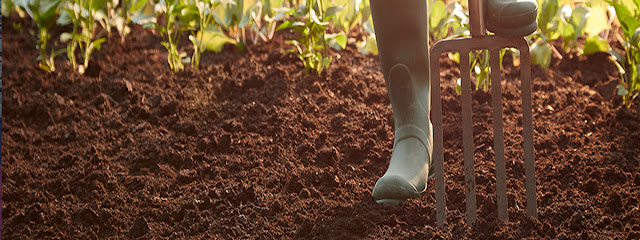How to start gardening as a BEGINNER??
How to start gardening as a BEGINNER??
Many dreamt of having their kitchen garden. And it doesn’t seem to be so tough! All you need is just a little bit of information to turn your garden right into a blooming oasis, stuffed with food. There’s no reason why to stay dreaming – just go ahead!
Who doesn’t like modern home-grown greens and herbs, in this epoch of chemicals, pesticides, and toxins combined within the veggies we devour? You may develop a few herbs at home for a regularly wholesome menu. All you want is a couple of space in your backyard and, after all, a little bit of love and care.
But where to begin then?
I Believe that growing leafy vegetables is a good way to kickstart your vegetable patch at home. They are normally easy to grow and you'll be able to use them in such a lot of dishes. These are my favorite easy-to-grow leafy greens. All your greens want is correct consideration, little upkeep, and good enough care to get the specified outcome.
Some herbs and vegetables can also be easily grown in small and large-sized pots to add somewhat variety to your small garden. an Inventory of such crops that you can easily make part of your natural farming. The major choices for places to plant are in garden beds, raised freestanding beds or pots.
Here are some kitchen garden concepts and sensible tips about how you'll grow a herb lawn proper in your kitchen!.
Some Herbs are CORIANDER, CURRY LEAVES, MINT,BASIL, SPINACH &CHILLIES
CORIANDER
Coriander or Cilantro, popularly referred to as dhania, is commonly applied in many Indian dishes. This herb is very easy to grow if you are kitchen gardening and the crops flower within a short span of minutes.
How to Grow It
1) To develop coriander, find a tray slightly than a pot for better enlargement with enough room space. Fill up the tray with 80% wealthy soil. Coriander will also be grown by way of planting 10-12 cut-up seeds. Sow these seeds about part an inch deep into the soil, leaving a three-inch gap between the 2 seeds.
2) Spray water steadily over the seeds and spot them sprout in about 15 days. Continue watering the sprouts for the seedlings to develop and leaves to be harvest-worthy. Ensure that the tray has enough holes to drain the excess water to empty simply.
3) Keep the tray in direct, brilliant daylight for better expansion of the plants. You may just use a nitrogen-based liquid fertilizer on a tray of coriander seedlings, to improve the foliage.
4) Coriander plants develop neatly in local weather this is neither too sizzling nor too cold. Excessive heat often causes the plant to flower too early before the plant leaves are to be used. It is crucial to reap the cilantro stalks on the proper time as leaving them too long without harvesting will flip the leaves tasteless. A coriander plant should be at least 6 inches tall for harvesting.
5) Collect the seeds that develop at the maturation of the cilantro plant. These can also be damaged into two and used for the next cycle of potting. Cilantro vegetation must be harvested little by little, reasonably than doing at a time. Do not harvest more than 0.33 of the foliage on a plant at any one level of time as doing so will make the plant unsuitable to harvest.
CURRY LEAVES
Curry leaves don't seem to be just used for various dishes in India but also used for several medicinal advantages. These leaves are frequently used within the preparation of Ayurvedic medicines. Curry leaf is a low-maintenance plant that is easy to develop in a single’s kitchen herb lawn.
How to Grow It
There are two techniques to develop curry leaf plants. The slower means is to get some recent curry leaf seeds and take away the exhausting, outer shell for the seeds to germinate and sprout briefly. The seedlings that emerge from these seeds will take a couple of years to determine fully and develop into harvest-worthy. The 2d (easier and quicker) means is to get a plant to transplant it to a container for your kitchen garden.
Curry leaf vegetation can develop well in little big containers or deep trays that experience ok holes pierced for excess water to empty. Ensure that the container you use is filled with rich soil and alter the container as the plant grows. Take care to make sure that no roots are damaged through the method of re-potting.
Curry leaf plants want direct, vivid sunlight to grow neatly. This plant sheds the leaves throughout wintry weather and watering this vegetation should be cut down throughout this season to steer clear of the roots from rotting. Ensure that the curry leaf plant will get a few doses of iron-based fertilizers before each harvest. The berries that appear at the curry leaf plants must bring to an end. This will give an upward push to more leaf expansion.
It is very important to prune your curry leaf plants regularly, to encourage just the right growth. A curry leaf plant can harvest when it is sturdy, strong and about 6 inches tall. At this stage, simply pluck off the leaves, a bit of at a time, to make certain that the plant does no longer gets too vulnerable. The extra you harvest a curry leaf plant, the bushier it'll grow.
MINT
Mint is a perennial with very aromatic, toothed leaves and tiny red, purple, or white flora. It has a fruity, fragrant taste. There are many types of mint—all fragrant, whether or not glossy or fuzzy, smooth or crinkled, vibrant green or variegated.
• Mints are used as lawn accents, ground covers, air fresheners, and herbal drugs. Mints desire a moist however well-drained website, something like their native habitat alongside move banks.
• Most will tolerate some color, and the variegated sorts would possibly require some protection from direct solar.
How to Grow It
• For rising open-air, plant one or two bought plants (or one or two cuttings from a pal) about 2 ft aside in moist soil. One or two crops will easily quilt the bottom. Mint must transform 1 or 2 ft tall.
• For the best growth in confined areas such as containers, top-dress plants with a skinny layer of compost or natural fertilizer every few months. Above ground pots will need winter coverage in cold climates. • On the lawn, plant mint close to cabbage and tomatoes.
BASIL
Holy Basil, aka tulsi, has several medicinal and healing, powers excluding being a sacred plant in India. It is really easy to develop in a herb garden at house, bearing in mind that this is a very low-maintenance plant.
How to Grow It
You can use either curd containers or pots filled with a mix of wealthy soil and organic compost or cow dung. Tulsi plants develop from seeds, which can be sown about part an inch underneath the top layer of the soil. Ensure that there's a hole of a minimum of 2 inches between two seeds. Place the container/pot in a place that receives bright, direct sunlight for no less than 6 to 7 hours...
It is very important to protect the plant from harsh draughts of chilly air. During summertime, water the plant each day, and all through winter, you can water the plant 2 to 3 occasions every week. At a temperature of about 20 degrees C, tulsi seeds take about two weeks to germinate. At this level, pull out the weaker seedlings and retain the more potent ones. You can transfer a few seedlings to some other pot/container to offer the remaining ones considerable house to develop. Use a general-purpose fertilizer about once a month for the plant. A tulsi plant is in a position for harvest when the plant seems lush. Pluck the entire giant leaves from the plant for your use. Periodic harvesting is vital to advertise the good enlargement of this plant. After plucking the leaves, lower down all the plant to about 6-8 inches above the bottom as this will likely lend a hand the plant develop higher.
SPINACH
Spinach, popularly referred to as palak, is rich in iron, antioxidants, and nutrients. It is easy to develop spinach whilst kitchen gardening at home, just like the plant, gets in a position for harvest in a span of six to eight weeks.
How to Grow It
Spinach plants want an extensive floor to unfold out and grow, hence, a tray can be better for them moderately than a pot. Choose a tray with enough number of holes for drainage, and fill about 80% of it with wealthy soil. Get excellent quality spinach seeds and sow them about half an inch into the top layer of the soil.
Water the seeds ceaselessly, making sure that you don't pour extra water. Make sure that the soil is moist all the time and does no longer overly dry out. Usually, spinach seeds germinate in about a week, retain the seedlings through eliminating the weak ones. Ensure that there are three to four inches of space between the seedlings. If need be, transfer some seedlings to every other tray. Spinach plants will have to be saved in a spot that receives vivid, direct daylight.
Occasionally, dealing with the plant with a nitrogen-based liquid fertilizer to give protection to it from bugs and other insects. Harvest your spinach vegetation after six to 8 weeks of sowing. Cut off the huge leaves at the plants, the use of a couple of scissors. The extra you harvest the spinach, the denser the foliage will develop into.
CHILIES
Chilies are very important elements used in lots of Indian dishes, and it may be grown in bins, bags also in the soil at your kitchen’s very own herb lawn.
How to Grow It
Chili vegetation grows higher in plastic pots or packing containers. These crops need heat and humid conditions to develop smartly. Ensure that the pot or container you select has enough holes for excellent drainage. Chilli seeds need a temperature of a minimum of 20 levels C to germinate.
Hence, early summer would be a good time to plant chilies at your house. Soil combined with a natural matter like dried leaves and cow manure is best for rising chilies. Get excellent high-quality chili seeds and sprinkle them excessive of the soil in the container or pot. Cover them with a skinny layer of soil, which is slightly moist at all times. Ensure that the container or pot by which you have got sown chili seeds get adequate direct sunlight.
When the seeds sprout leaves, pull out the weaker ones and retain simplest the nice and powerful ones. It could also be a good idea to keep just one seedling within the container, at the early stage. Spray a nitrogen-based liquid fertilizer infrequently at the chili plant to enhance the foliage and prune the chili plant steadily for higher expansion. Keep the chili plant at a heat place throughout winters.
The chilies are in a position to harvest when they have got a glittery end on them. Now that you already know that kitchen gardening is reasonably easy, are you in a position to start your individual little kitchen’s herb lawn? Besides, your crops supplying you with components are bound to make you're feeling content at the house!
Have any further ideas for herbs which can be easy to develop and care for at house?
Let us know! Was this article useful? · 😃 · 😐 · 😔




Comments
Post a Comment